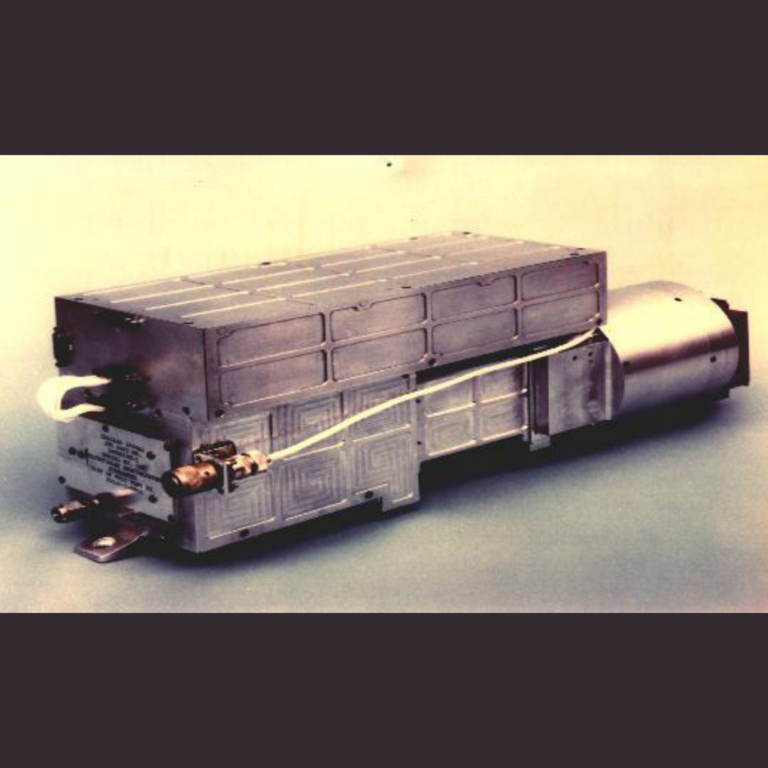UVS
Ultraviolet Spectrometer
The ultraviolet spectrometer is one of LASP's most flown remote sensing instruments to measure composition around Earth, Jupiter, Venus, Mars and comets. Different versions of the UVS flew on Galileo, Mariners 6,7,&9, Pioneer Venus, SME, Spartan Halley and SNOE.
The basic instrument design includes a telescope, primary/secondary mirror, Ebert mirror, diffraction grating and a detection method (photomultiplier tube). Later versions used an Ebert-Fastie spectrometer.
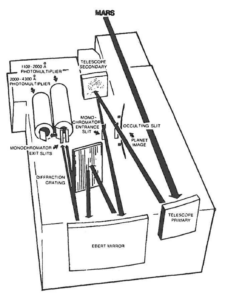
Mariner 6, 7 & 9 UVS was designed to measure Mars atmosphere composition through emission spectra between 110nm-340nm. Discoveries include the Mars' ultraviolet airglow, the first observations of atomic hydrogen, pressure altitude measurements, first detection of ozone around Mars, and topography of Mars.
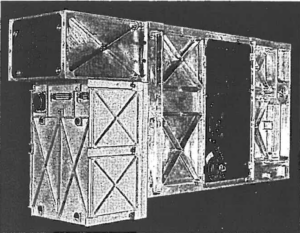
Galileo UVS was designed to measure Jupiter and its moons with three wavelength ranges: the F-channel covers 162.0 to 323.1 nm, the N-channel covers 282.0 to 432.0 nm, and the G-channel covers 113.3 to 192.1 nm. Major findings include an atomic hydrogen atmosphere at Callisto and Ganymede, oxygen on Callisto’s surface, hydrogen peroxide on the surface of Europa, SO2 and it’s daughter products from Io’s volcanoes, and the ultraviolet emissions of the ions of sulfur and oxygen in the Io torus.
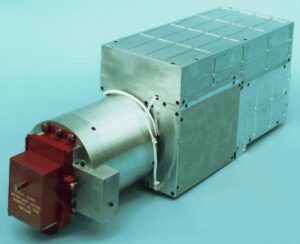
Pioneer Venus UVS was designed to measure the detailed structure of the upper atmosphere and ionosphere of Venus, investigated the interaction of the solar wind with the ionosphere and the magnetic field in the vicinity of Venus, determined the characteristics of the atmosphere and surface of Venus on a planetary scale, determined the planet’s gravitational field harmonics from perturbations of the spacecraft orbit, detected gamma-ray bursts, and made UV observations of comets.
SME UVS was designed to measure and characterize ozone in Earth's atmosphere. It was an Ebert-Fastie spectrometer design (see SNOE) with several channels over the 240nm-640nm wavelength range.
Spartan Halley UVS objective was to obtain UV spectra of the coma and tail of Comet Halley shortly before its perihelion, in order to determine the rates of production of O+ and OH-, and to relate the production of these species to the photodissociation of water. The instrument consisted of two identical Ebert-Fastie spectrometers, one covering the wavelength range 125 to 166 nm and the other covering 160 to 320 nm.
SNOE UVS was designed to measure the density of nitric oxide between the altitudes of 100 and 200 km in the terrestrial upper atmosphere by observing the (1,0) and (0,1) gamma bands at 215nm and 237nm, respectively. SNOE was the first to globally map the variability of NO.
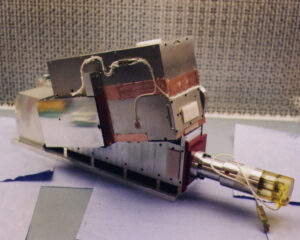
Science Target:
Science Focus:
Instrument Type:
